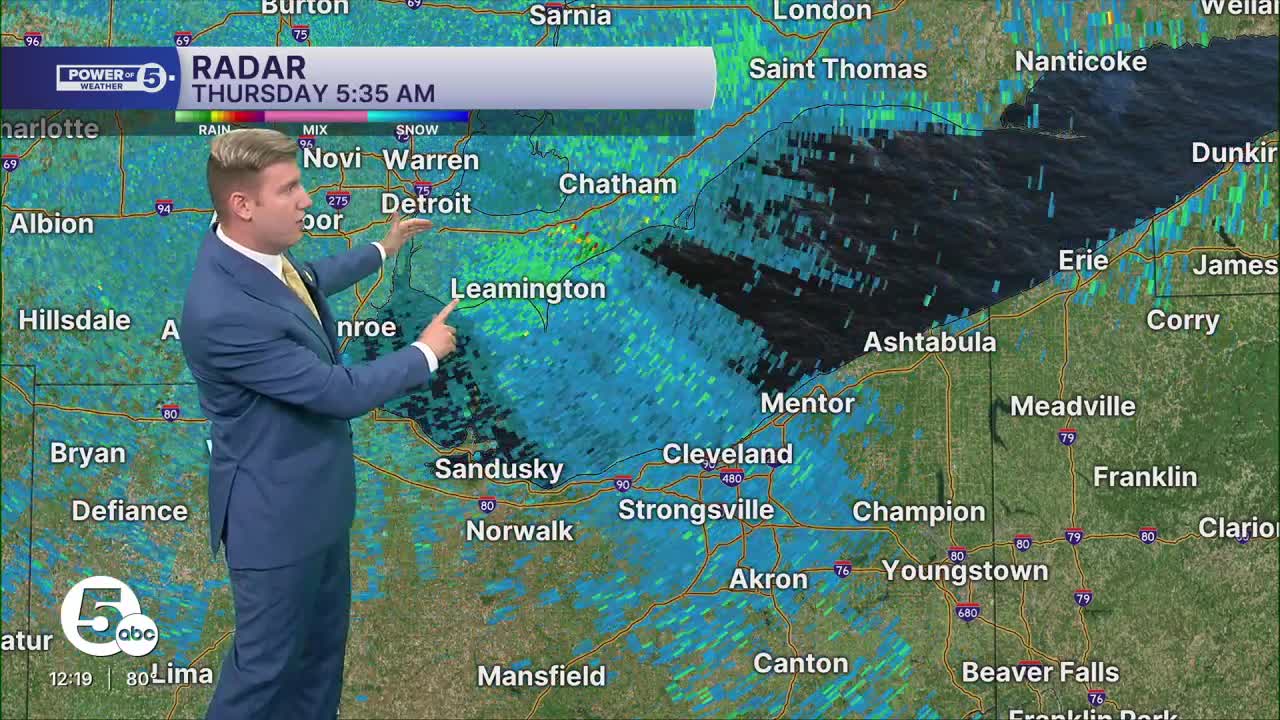When certain weather conditions allow, the radar lights up...not with rain, but with noise. Radar detects other items that are not precipitation, and that is generally called noise. Sometimes, you can see and/or hear the noise. How is that possible?
The instigator for Wednesday night and Thursday morning's radar noise was a cold front that dropped some drenching downpours and thunderstorms across Northeast Ohio. It was slow to move out, and the cold air behind the cold front was having a tough time moving into the area. When two different air masses collide, it often creates a temperature inversion, where the air higher up in the sky briefly gets warmer.
Usually, air gets colder the higher in the sky it gets. This inversion traps waves, including the ones beamed out by radar, and returns the waves back to the radar as noise (also called clutter). These waves are not just restricted to the frequencies relayed by radar, but also to radio waves, especially FM.
Overnight, most people across Northeast Ohio could hear radio stations 100 to 300 miles away more clearly than some stations in Cleveland. That included all of the Detroit stations, including 93.1 WUFL, which overpowered local WZAK. 88.7 CIMX Windsor, Ontario, a country station, was heard over local WJCU. Stations from as far away as Saginaw in Michigan and Kitchener in Ontario were heard.
The official name for the phenomenon is 'tropospheric ducting' as the waves are essentially ducting (bouncing) from the inversion in the sky back down to the ground at much longer distances than usual.
The cold front also helped usher in other noises that people were able to see: flocks of birds. Throughout the morning, the north wind behind the cold front, with the changing temperatures and airmass, caused some flocks of birds to fly in enormous groups, dozens of miles wide, south from the lake to inland areas.
These conditions are most common during late summer and early fall, so expect more of this noise to be seen and heard, as explained above. So, the next time a strong cold front is forecasted and doesn't get much colder, it is a recipe for lots of radar noise and some cool phenomena as a result.
Want the latest Power of 5 weather team updates wherever you go? Download the News 5 App free now: Apple|Android
Click here to view our interactive radar.
Follow the News 5 Weather Team:
Trent Magill: Facebook & Twitter
Katie McGraw: Facebook & Twitter
Phil Sakal: Facebook & Twitter
Allan Nosoff: Facebook & Twitter



